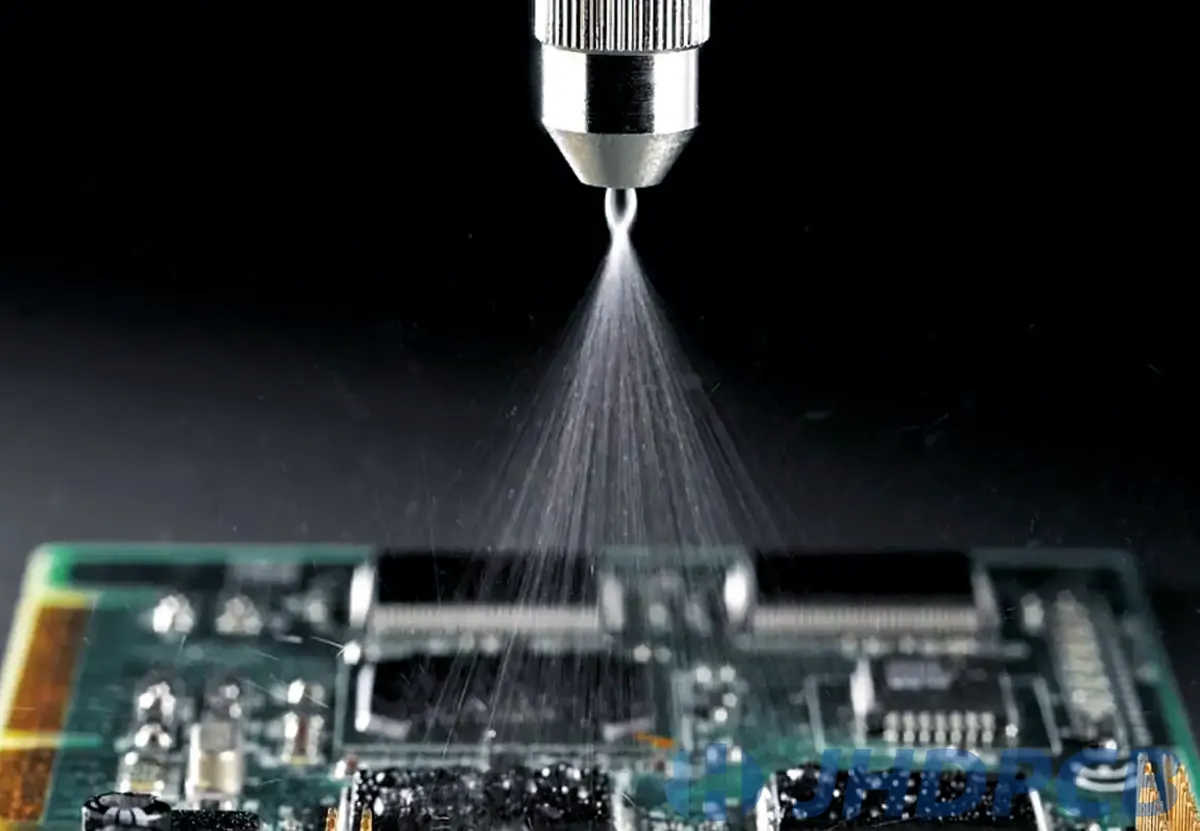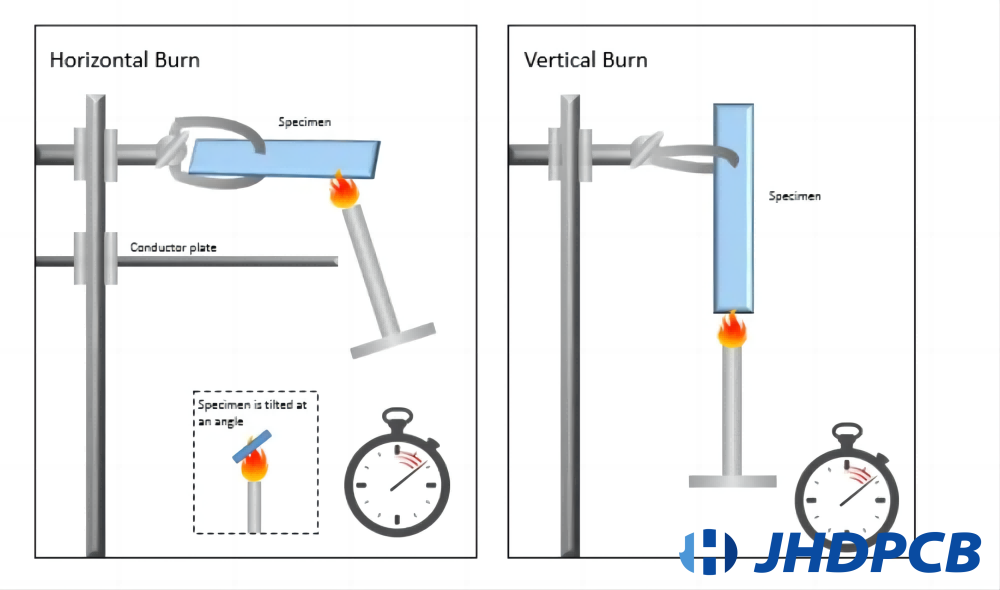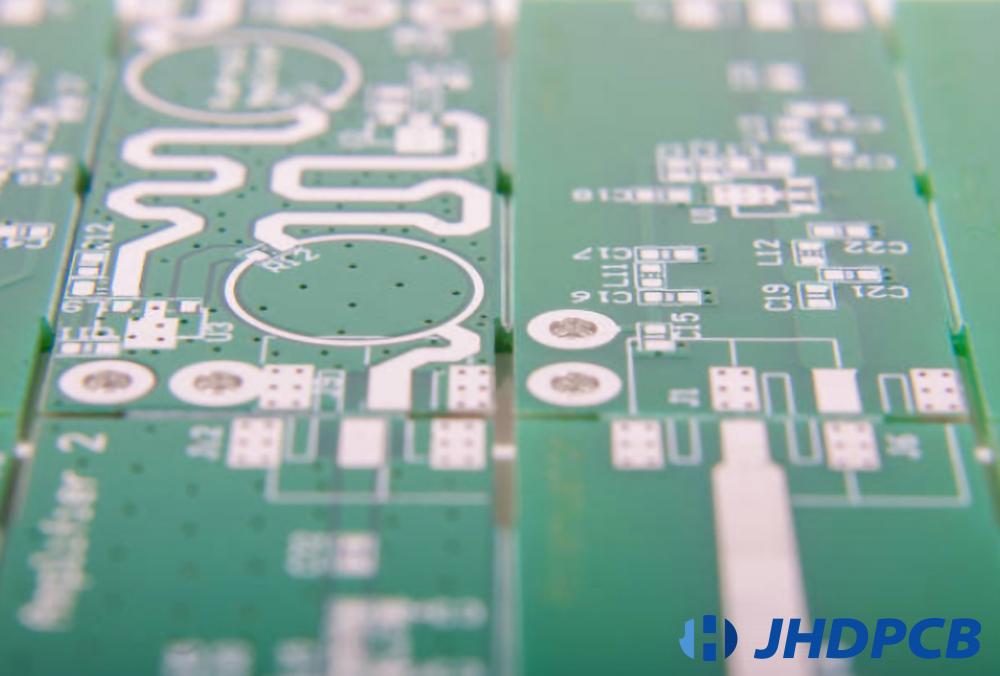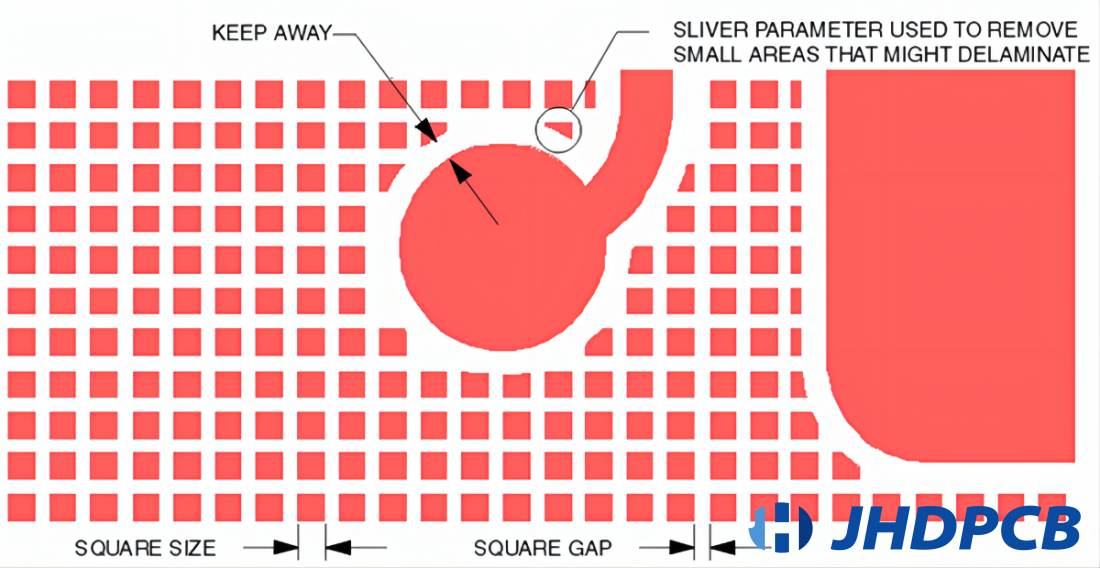Conformal Coatings: Guidelines for Application Methods, Measurement Tests, and More.
jhdpcb@gmail.com
What is a conformal coating?
Conformal coating is a layer of polymer material that is applied onto a printed circuit board (PCB) to safeguard the board and its components from potentially damaging environmental conditions, while ensuring that the board’s functionality remains unaffected. It acts as an insulating layer while protecting the PCB surface. These coatings ‘conform’ to the inherent irregularity of PCB structure and environment. Typically applied at 25-250µm thick, the film can protect against dust, various temperature changes and other abrasive effects, ultimately extending the working life of the PCB. And a variety of conformal coating types are mentioned below.
Are Conformal Coatings Conductive?
Conformal coating is made of non-conductive material, which is a protective dielectric layer. Applying onto the printed circuit board (PCB) surface to isolate the PCB or components from extreme environments where there are water, humidity and dust. It even isolates components (which may generate high voltage or high heat) from the rest of the PCB board to protect the electronic components from damage during their working life. It is the exact opposite of the PCB surface treatment process, and the insulating properties provided by the Conformal paint can help the designer reduce the PCB conductor spacing. Most of the surface treatment processes have a certain degree of conductivity, why do you say most of them? This is because some surface treatments are not conductive, such as OSP. If you want to know the detailed knowledge of PCB surface treatment process, please click to read.
And when asked conformal coating is waterproof? The answer is no. While conformal coating can provide some degree of water resistance, it is not necessarily waterproof. The level of water resistance depends on the specific type of conformal coating used and the application process.
How does conformal coating help PCBs?
PCB conformal coating with a high degree of insulating protection, resulting in tighter conductor spacing. It can be used in a wide range of environments to fully protect the components against contamination, salt spray, moisture, fungus, chemical and corrosive attack, and more. It can provide protection against rough handling, and installation damage, and reduce the impact of mechanical and thermal stress. By applying conformal coatings, devices can operate with higher voltage gradients and closer track spacing, which makes it possible for designers to meet miniaturization and reliability requirements. It can help improve the dielectric strength between conductors, making the design of PCB more compact and smaller. Conformal coat is very popular in multilayer circuit board and HDI manufacturing.
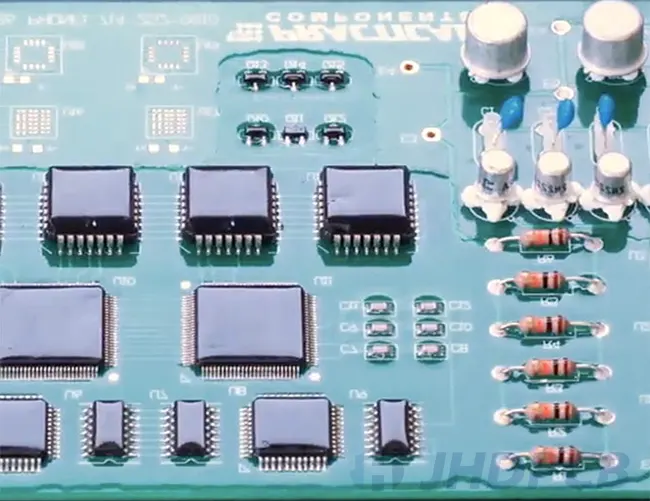
What chemical materials are commonly used in conformal coatings?
Conformal coatings can be classified according to their basic chemistry, each one has its own beneficial properties for the different environments in which the PCB will work. It is important to select the coating chemical composition suitable for the application requirements. In this section, we are mainly talking about several PCB conformal coating types, including silicone conformal coatings, epoxy conformal coatings, urethane conformal coating, acrylic conformal coatings, parylene conformal coatings, hybrid coatings, water-based coatings, etc. Each Conformal paint has its own characteristics and properties that make them the first choice for specific environments and application scenarios.
Silicone Resin (SR)
In general, silicone coatings (SR) are most resistant to extreme temperatures or temperature fluctuations due to their greater flexibility. They feature rubbery nature, which makes them resilient against vibrational stresses. But this property means they are not resistant to abrasion. SR also offers good chemical, moisture and salt spray resistance and is very flexible. These coatings with excellent performance, providing broad protection in challenging and rapidly changing manufacturing sectors.
Epoxy resin (ER)
Epoxy resin (ER) is usually supplied as a two‐component compound and forms a very hard coating. Unlike conventional conformal coatings, they boast great humidity resistance and are generally non-permeable. They are high wear-resisting and chemical resistance. Although coatings can operate at temperatures up to 150℃, it causes pressure on the components in extreme environments. Epoxy coatings are very easy to use, but they are very hard to remove once cured and are not as pliable as other materials. During the curing process, it is common for conformal coatings to shrink. These coatings are frequently used in potting compounds and, unlike other coatings, provide complete coverage of the electronics in a solid and even layer of material.
Acrylic resin (AR)
Acrylic coatings have reasonable prices and good environmental protection. They are cost-effective, offer good overall protection, and are simple to apply and repair. They exhibit high dielectric strength, as well as reasonable resistance to moisture and abrasion. Additionally, acrylic coatings can be easily and quickly removed using a variety of solvents, often without the need for agitation. However, their property of limited solvent resistance makes them suitable for re-work but not for applications where chemical resisting is very important. And conformal coating acrylic vs silicone, the former has the advantage of faster removal property.
Polyurethane Resin (UR)
In comparison to acrylic coatings, urethane conformal coating offers superior protection in challenging environments and exceptional chemical resistance. They maintain flexibility at extremely low temperatures. Same as acrylics, they are also suitable for a wide operating temperature range in many applications. However, they are both resistant to abrasion and solvent, which makes the coatings very difficult to remove.
Parylene (XY)
Parylene conformal coatings are a unique type of coating applied by vapor phase deposition. This kind of coating has excellent dielectric strength and superior moisture resistance, and solvent resistance. Thanks to its good heat resistance, the coating can work in harsh temperatures. By utilizing the method of vapor deposition, Parylene conformal coatings are able to offer exceptional protection to circuit boards while being applied in a very thin layer. However, it’s not easy to remove or rework and requires abrasion techniques. The only way to recoat with perylene is by using vapor phase deposition equipment; it is impossible to do so by any other means. Meanwhile, the materials of parylene conformal coating cost a lot.
Hybrid Coatings
Hybrid coating is where base chemistries mixture is used. And these can result in many different coating options that can be tailored to specific application requirements. For instance, polyurethane can be used in combination with silicone to help improve its tolerance at higher temperatures. Depending on your products and the environment to which it will be exposed, a range of hybrid coatings are available to help achieve higher performance.
Water-based Coating
Water-based coatings cure by evaporating water from the system. The coating is based on polymeric materials, specifically formulated to protect electronic circuits. These coatings boast low-VOC property and replace most of the solvent in the system with water. This type of coatings guarantees the safety of operator, makes it less harmful to the environment and easier to clean up compared to solvent-based coatings.
UV Cure Coating
UV cure conformal coatings are also a kind of hybrid coatings, which use a combination of different chemistry types to create a dual-cure system. This approach is utilized to avoid any issues related to UV shadow areas that may occur during the curing process. The process occurs very quickly, taking only a few seconds to cure the coating under UV light. This is highly beneficial for high-throughput applications, as any shadow regions will cure over time with the secondary cure system. However, due to their curing process, it may be challenging to remove them from the PCB and reduce flexibility.
2K Conformal Coating
2K (two-component) conformal coating is a hybrid technology that combines the best performance of encapsulating resins and conformal coating. The 2K coating provides good coverage and excellent flexibility to protect fragile components. Additionally, 2K coatings have excellent mechanical properties and are resistant to abrasion. However, being two-part, it requires more complex application equipment than 1K coatings and is more difficult to remove, making circuit board repair more challenging.
| Pros and Cons of Conformal Coating Materials | ||
|---|---|---|
| Categories | Pros | Cons |
| Silicone (SR) | Great in Extreme Temps; Excellent Chemical Resistance ; Excellent Moisture resistance; Salt Spray Resistance; High Humidity and Corrosion Resistance; Great PCB Adhesion; | Difficult to Remove; Not Abrasion Resistant; Localized Repairs Only; |
| Urethane (Polyurethane) (UR) | Good moisture and chemical resistance; High Humidity and Corrosion Resistance; Abrasion-resistant; Solvent-resistant; | Difficult to Remove; Long time Curing Process; High VOC Content; |
| Epoxy (ER) | Great Abrasion+Moisture Resistance; Great Chemical Resistance; Performs Well in Harsh Environments; | Difficult to Remove/Rework; High Curing Shrinkage; Not Good for High Temp; |
| Acrylic (AR) | Easy To Apply and Repair; Moisture and Abrasion Resistance; Easily and Quickly Removed; Quick Drying Prosperities; Not Shrink During Curing; | Low Chemical- and Solvent-resisting; Reduced Resistance to Abrasion; Unsuitable for Harsh Environments; Not Ideal for High-Temp Applications; |
| Parylene (XY) | Chemical Inertness; No Need for Curing Time; High Dielectric Strength; Best Solvent at Extreme Temperatures; | Hard To Remove/Rework; Not Suitable for Long-Term Outdoor Exposure; High Cost; |
| Hybrid Coatings | Extensive Temperature Operating Range; Easily Applying; High Chemical Resistance; | High Costs; Long Curing Time; |
| Water-based Coating | Excellent Solvent Resistance; Low VOC Emissions; Enhanced performance; Excellent Dielectric Properties; | Long Curing Time; Expensive; |
| UV Cure Coating | Fast Curing in Seconds; Secondary Moisture Curing System Employed to Aid Curing in Shaded Areas; Good Protection in A Range of Environments; Great Chemical Resistance; | High Costs; Hard to Remove; Reduced Flexibility; |
| 2K (two component) Coating | High Performance; Wide Operating Temperature Range; Good Moisture Protection; Applied with Greater Thickness Compared to Single-Part Coatings; | Not easy to Remove or Rework; Need More Sophisticated Application Equipment; |
How to apply a conformal coating for PCB?
The application method for conformal coating PCB is equally important. There are numerous approaches available for applying the Three anti-paint material, such as manual spraying, automated spraying, brushing, dipping or selectively coating by machines.
- Manual Spraying application.
Conformal coating spray for PCB by hand has many ways. It can be applied with an aerosol can, atomized spray gun, or a handheld spray gun. All liquid coating materials can be applied using these methods. For low-volume PCB production, manual spraying is commonly used. In contrast, for small-scale production or prototyping, aerosol conformal coating is a faster and more cost-effective method of application. Using an atomized spray gun to apply coatings is akin to spraying by hand with an aerosol can, but it offers the advantage of the faster and more efficient application. Proper ventilation is essential when using this method, and it is recommended to use a professional spray booth. - Automated spraying.
To apply the conformal coating to a board, a programmed spray system can be used. This system involves moving the board along a conveyor beneath various spray heads. This method offers improved efficiency and greater accuracy compared to manual applications. It suits for silicone conformal coating spray, acrylic conformal coating spray, and many others. Automated conformal coating spraying has two primary methods, which are selective coating and dipping. - Selective coating.
Utilizing specialized robotic spray nozzles to apply the conformal coating, this automated process offers the most efficient method of coating a PCB. The process selectively applies the coating only to certain areas of the board that have been designated by the user. - Dipping.
This is traditional method of applying conformal coating involves immersing the PCBs into a tank of the coating liquid, which then coating coalesces around the PCB during the immersion process. Although this dipping method ensures full coverage of the board, it can be a time-consuming process. In addition to the time required for dipping each board, there is also a need to cover contacts or other areas that should not be coated. This method is often used for objects that have complex shapes or for coating both sides of an object simultaneously.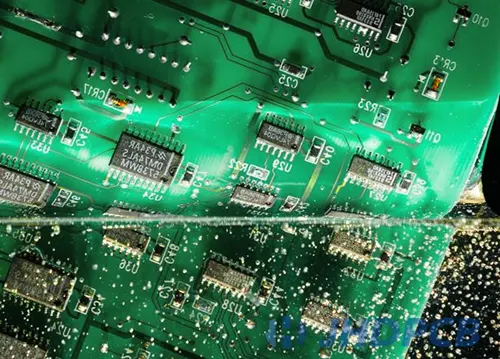
- Brushing.
Applying a conformal coating brush to coat is a prevalent practice, commonly utilized in repair and rework applications due to its simplicity. The coating process involves using a brush, a container for holding the coating, and a specific area for application, making it ideal for small-batch production. However, this method demands a significant amount of manual labor and is highly reliant on the proficiency and consistency of the operator, resulting in variations in the final product.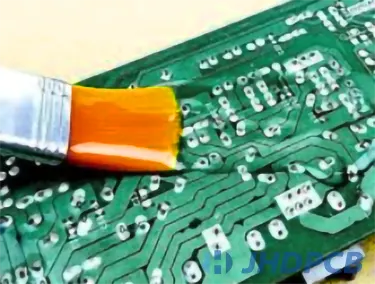
What are the factors to consider with conformal coating?
Selecting the appropriate method for applying a conformal coating is a complex and thorough process that involves taking into account three main considerations. In order to identify the optimal application process and the best conformal coating material, several important factors should be taken into consideration, including:
- Temperature operating range;
- Volume of circuits to be coated;
- Production throughput requirements;
- Board design requirements;
- Environmental factors for the circuit;
- Equipment requirements;
- Pre-coating processing;
- International, customer or National standards.
If you are not sure which conformal coating you should choose for your project in line with the PCB application direction. You can submit relevant production materials on JHD’s quotation page, and our professional engineers will check and give a cost-effective solution.
Production steps for applying a conformally coated.
Six key steps are included in the production process for conform coating.
- PCB Cleaning-
To ensure the successful application of coatings, it is necessary to remove various residues that may originate from operators handling, soldering, machine operations, and environmental contamination. This requires the surface to be free from contaminants such as dirt, wax, and grease. Cleaning techniques that can achieve this include the use of aqueous chemistries, solvent cleaning, and plasma cleaning. - Masking-
The primary purpose of masking during the coating process is to keep the specific areas of the circuit board and components from being coated. This is essential because the conformal coating is an insulator, and certain areas must remain uncoated. Various materials are used for masking, including masking tapes, dots, shapes, liquid latex, and masking boots. - Coating-
Conformal coatings can be applied in multiple ways like brushing, dipping, manual/atomized spraying, etc. - Demasking and finishing-
Masking removal is done after the coating. Next, finishing is implemented to ensure:
-Quality of coating;
-Prevention of masking leakage;
-Verification of standards;
-Prevention of coating defects. - Curing-
This ensures that the coating reaches its desired properties (electrical and mechanical) and protects the board during operation. The methods are:
-Drying/Solvent evaporation;
-Heat;
-RT (Moisture / Two-part);
-Combination cure;
-UV / Heat, UV / Moisture, UV / Two-part. - Inspection-
Inspection is a crucial step in the conformal coating process. The once conformal coating process is completed, the PCB undergoes testing for surface insulation resistance and appearance, including checking for cracks, blistering, and bubbles. Inspection methods include manual inspection, UV lamp visibility, and automated optical inspection (AOI).
How long does it take for a conformal coating to dry?
The drying and curing time of conformal coating process varies depending on factors such as the type of resin used, the thickness of the coating and the chosen curing method. Conformal coatings have different curing methods such as: thermal curing, moisture curing, UV curing and evaporation curing. The details are as below:
Evaporative Curing Mechanism-
After the liquid carrier evaporates, the coating resin remains. Although the concept is simple, PCBs are generally ready for handling within an hour, but it may take several days for them to fully cure. The application parameters are affected by humidity, regardless of whether the liquid carrier is solvent-based or water-based. Solvents are convenient for processing as they provide consistent coverage and have a quick curing time. As a result of their flammability, proper ventilation and fume extraction techniques are necessarily employed when working with conformal coatings. In contrast, water eliminates the risk of flammability, but it takes longer to cure and is highly sensitive to ambient humidity.
Moisture Curing-
Moisture curing coatings are available in both silicone and polyurethane chemistries, with options for solvent-based and solvent-free formulations. These coatings rely on atmospheric moisture to initiate curing. These materials will react with moisture present in the environment to form the polymer coating. This type of curing mechanism can be used in conjunction with Evaporative Cure, in which moisture reacts with resin to initiate final curing, as the solvent carrier evaporates.
Heat Curing-
Heat-curing conformal coatings, which are primarily silicone-based, require temperatures of at least 100-110°C for 10-15 minutes to achieve complete cure. The mechanism can be utilized alongside both one-component and multi-component systems. Additionally, it can also serve as a secondary curing mechanism for UV, moisture, or evaporative curing. While heat can speed up the curing process, it is important to consider the thermal sensitivity of PCBs and electronic components.
UV Curing-
Ultraviolet light-cured coatings provide speedy throughput and are 100% solid with no carrier solvents. As UV curing occurs in the production line, a secondary curing mechanism is necessary for shaded regions and under the components. Repairing and reworking UV cured coatings can be challenging. Even though UV curing occurs immediately upon exposure to UV light, shaded areas may require several days to cure completely.
Three stages of drying and curing in the conformal coating process:
- Stage 1: Tack Drying – This refers to the stage when the coating has dried enough and does not feel sticky when handled. Acrylic solvent-based coatings may reach this “tack dry” stage within 10-15 minutes, depending on factors like coating thickness, solvent type, extraction rates, temperature, and humidity. However, the coating will be soft to handle and susceptible to damage at this point.
- Stage 2: Fully Dried – The conformal coating and PCB can be handled normally but the coating is not yet fully cured. This is advantageous for production purposes, as the PCB can be further processed and inserted into packaging. It is important to note that the coating has not yet undergone the curing process.
- Stage 3: Fully Cured – The conformal coating has achieved its peak properties when it undergoes the curing process, during which the coating undergoes a transformation. The speed of the curing process varies depending on the coating used.
How to measure conformal coating thickness?
Conformal coatings are usually applied as very thin layers, providing optimal protection while minimizing concerns such as heat entrapment, excess weight, and other issues. Typically, the common applied thickness range is from 1 to 5 mils (25 to 127 microns) to achieve maximum protection while minimizing these concerns. So how do you measure the thickness of a conformal coating? Several different methods of measuring conformal coating thickness are listed below.
- Wet Film Gauge
This is an inexpensive, quick and easy method to measure the thickness of coating while still wet. These gauges feature a collection of notches and teeth, with each tooth having a calibrated and known length. The gauge is placed directly onto the wet film for measurement purposes. To determine the dry film thickness, the wet film measurement is multiplied by the solids content after completion of the coating application process.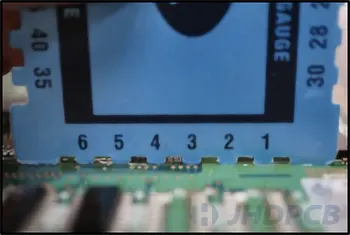
- Micrometer
Micrometer thickness measurements can measure down to ± 10 um. Before and after the application of conformal coating, measurements are taken on the surface of a PCB or a test coupon. The difference between the two readings is then calculated to determine the coating thickness, and the standard deviation is calculated to assess the coating’s uniformity.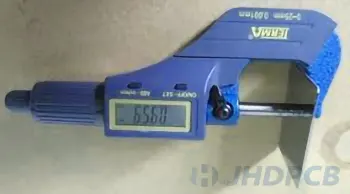
- Eddy Current Probes
The thickness measurement process entails placing the test probe head flat onto the surface of the conformal coating, and the measurement results are nearly instantaneous. The measurements are highly accurate and non-destructive, provided that there is metal present directly beneath the tested point on the circuit board. Otherwise, the measurements will be unreliable, and if the probe is not placed flush on the test area, inaccurate readings will appear. - Ultrasonic thickness gauge
This method utilizes ultrasonic waves to measure the thickness of coatings, eliminating the requirement for a metal backplane as seen in eddy current probes. The thickness is determined by calculating the time it takes for the sound to travel from the transducer, through the coating, reach the board’s surface, and back through the coating to the transducer. In order to ensure proper contact with the surface, a conductive medium such as propylene glycol or water is necessary. Unless the conductive medium has an adverse impact on the coating, this test is generally regarded as non-destructive.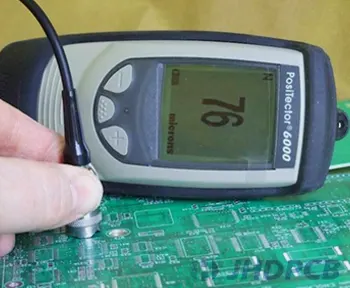
What are common conformal coating defect types?
De-wetting:
De-wetting occurs when a liquid conformal coating will not evenly coat the surface. This is a result of substrate contamination that is not compatible with the coating. Generally, the conformal coating will bead up and move away from such contaminants like process oil, flux residues, fingerprints, etc. Thoroughly cleaning the substrate before applying the coating typically resolves this issue.
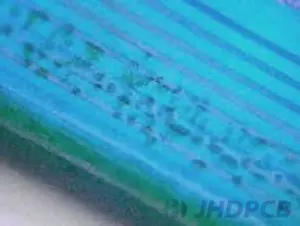
Delamination:
Delamination refers to the separation of the conformal coating from the substrate, resulting in an exposed area beneath it. Much like de-wetting, the primary cause of this issue is a surface that has been contaminated. In addition, insufficient tack time between coats can also contribute to the problem, where the solvent has not been given enough time to evaporate before the next coat is applied. It also occurs when coating applied too thick to the substrate/improper curing of the conformal coating/insufficient drying time between coats.
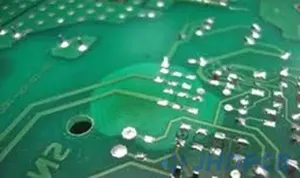
Bubbles, Pinholes, Foam:
Bubbles in conformal coating occur when air pockets get trapped beneath the coating layer. This often happens when the coating fails to adhere properly to the substrate and does not level out evenly. And applying conformal coating using a brush may also cause bubbles on the surface as it hardens. Foam is an extreme form of bubbling, and sometimes bubbles burst through the conformal coating, forming a pinhole. Make sure the coating is applied at recommended thickness. Use a lower viscosity conformal coating is also a good solution.
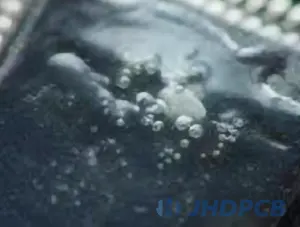
Fisheyes:
During spray application or shortly thereafter, small craters may appear on the coating’s surface as a result of localized de-wetting. This issue is typically caused by oil/water entrainment in the sprayer air system, which is frequently observed when utilizing shop air. A good way to avoid this problem is to ensure that the filtration system is well-maintained in order to remove any oil or moisture from entering the sprayer.
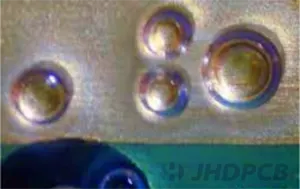
Orange peel:
This looks exactly what the term describes – an uneven, mottled appearance. When applying a spray system, insufficient air pressure can lead to uneven atomization and result in a texture resembling that of an orange peel. Improper application of the coating materials will cause orange peel. And there some other causes like an incorrect choice of thinner, insufficient coating to the substrate, lack of curing time, etc. To avoid orange peel, applying coating att the specified thickness and reducing the viscosity of the coating are good ways.
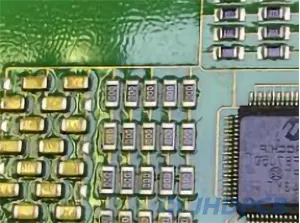
Cracking:
Cracking happens when a smooth surface of coating fractures into sections. Characterized by long cracks or areas of smaller cracks (also called crazing). It is usually caused by excessive coating thickness or inadequate drying time between the outer surface and the layers beneath it. If heat is utilized to accelerate the curing process, exposing the wet film to excessively high temperatures can also lead to both cracking and crazing. Generally, a staged evaporation rate is ideal for crack prevention. If the substrate continues to crack, it may be necessary to use a longer curing time at a lower temperature.
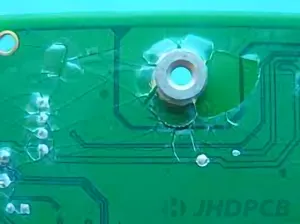
What are the test methods for conformally coated?
Examining conformal coated circuit boards is an essential step that must be taken upon completing the coating process. This inspection can be done manually or with the aid of UV lamps or automated optical inspection (AOI) systems. In order to ensure that the coating meets the required standards, it must be subjected to a variety of environmental conditions through various testing procedures to determine its performance range and limitations. A multitude of tests must be conducted to achieve this goal:
Surface Insulation Resistance testing
Measuring the electrical resistance between two contacts is a method of assessing the insulation properties of a material. This measurement is conducted both prior to and following coating and exposure to severe conditions, making sure the coating maintains sufficient insulation. Furthermore, the coating must exhibit exceptional dielectric strength, which can be determined from the intertrack separation and the potential difference between adjacent tracks. The minimum acceptable value is established based on these factors.
UV Resistance Testing
UV resistant testing is a process used to evaluate the ability of a material or coating to resist damage or degradation caused by exposure to ultraviolet (UV) light. This testing is typically conducted using specialized equipment, such as a UV exposure chamber, to simulate prolonged exposure to UV radiation. The test results can provide important information regarding the durability and longevity of the material or coating, which can be crucial in various applications, such as outdoor electronics, automotive parts, and building materials.
Flexibility Testing
For a conformal coating to cover all regions of the board sufficiently and avoid cracking or chipping during the curing process, it must exhibit a specific degree of flexibility. The flexibility of the coating is also essential to prevent damage when moving or handling the board, as well as to allow for the necessary expansion and contraction of the PCB.
Adhesion Testing
For conformal coatings to provide complete protection, it is essential that they adhere firmly to the board. To assess the adhesion strength of the coating, a specialized instrument is employed to score lines in both directions on the coating, creating a cross-hatch pattern. Subsequently, a piece of adhesive tape is applied onto the cross-hatched area, gently removed, and the coating is inspected to check if any squares have been detached from the substrate.
Environmental Testing
To guarantee that PCBs are adequately protected, environmental testing is an essential stage. End-use conditions should be replicated or accelerated, however caution must be given to ensure that the accelerated tests are suitable for comparison with the actual end-use conditions, including humidity exposure and salt mist testing, as well as thermal cycling, shock and aging, which are parameters that can be tested individually or in combination based on requirements.
Environmental Cycling
The UL746 test methods allow for the use of the following environmental cycling profile.
- 24 hours immersed in water, followed by-
- 24 hours at 105°C, followed by-
- 96 hours at 90%RH, 35°C, followed by-
- 8 hours at -70°C – end of cycle.
- 3 cycles
Humidity Testing
The presence of moisture in the atmosphere can lead to corrosion in PCBs by reacting with metal components and connections on the board. Therefore, humidity is an important factor that needs to be considered when evaluating the susceptibility of PCBs to corrosion. Humidity testing is conducted on conformal coatings to ensure their resistance to moisture and humidity is maintained.
Salt Mist Testing
Conducting salt mist tests is crucial for evaluating the performance of boards that will be used in environments with salt present, such as electronics used in marine shipping applications. The combination of salt and water is highly corrosive, making it essential to provide sufficient protection against this.
Corrosive Gas Testing
To evaluate the performance of coatings in harsh environments, PCBs are subjected to corrosive gas testing using a mixed gas combination of hydrogen sulfide and sulfur dioxide as BS EN 60068-2-60, method 1. The Surface Insulation Resistance (SIR) test is conducted to assess the performance of each coating under this condition.
Electrical Testing
Accurate evaluation of electrical properties is a critical aspect of any conformal coating application. Commonly employed evaluation techniques include:
- Dielectric Strength;
- Dielectric Constant;
- Dissipation Factor;
- Surface Insulation Resistance;
- Comparative Tracking Index (CTI).
Water Immersion
The immersion of conformal coating in water represents a very harsh test to pass. In this regard, coated boards were subjected to a 7-day immersion, and the SIR results were analyzed for comparison. For continuous or frequent immersion in water, we recommend the use of Encapsulation Resins.
Solvent Resistance
During its lifespan, a PCB may encounter different solvents either through direct contact or exposure to its surrounding environment. To evaluate the ability of a coating to withstand these solvents, it is possible to perform solvent resistance tests following the certification IEC 61086-2. The effectiveness of the coating is heavily reliant on both the solvents employed during the testing and the chemical makeup of the coating.
Thermal Cycling / Thermal Shock
Temperature fluctuations are a common occurrence in most electronic applications, which can be caused by changes in operating temperature or the surroundings. For instance, during the winter season, a parked car in Europe can experience extremely cold temperatures as low as -40°C. However, once the engine is started, its temperature rapidly rises to around 100°C, depending on the vehicle model. Since a car may go through this process thousands of times during its lifespan, it is critical to subject products to thermal cycle testing or more extreme thermal shock testing (changing the temperature rapidly), to ensure that the protective coating can sustain its level of protection.
How do I remove the conformal coating?
If you need to perform a rework or replace damaged components on a PCB, it may be necessary to remove the Conformal paint. However, before doing so, it is crucial to identify the type of coating material used on the board to determine the best removal method. The removal techniques and materials utilized are determined by both the coating resins and the size of the area to be treated, which can affect the time required for removal. Here are some commonly used methods for conformal coating removal:
Chemical Solvent Removal
Solvents are commonly used as conformal coating removers, but caution must be exercised to ensure that the solvent used does not damage the components on the circuit board. For instance, acrylic coatings can be easily removed due to their low chemical resistance, while removing silicone and urethane coatings requires special solvents, longer soak times, and brushing to achieve complete removal. Parylene coating cannot be removed by a solvent. To apply the solvent, prepare the area with high-temperature tape and use a foam swab.
Stripping Method
Certain types of conformal coatings, such as silicone and flexible coatings, can be removed from circuit boards by peeling them off using a dull knife or blade. This method is typically used for RTV silicone or thick rubber coatings. However, this method is not as dependable as others and can potentially cause damage to the components if precise control is not exercised.
Thermal Method
The thermal removal method for conformal coating involves using low-temperature heat to delicately burn and melt away the coating, while ensuring that the components are not damaged. This method is effective for most types of conformal coatings and requires careful temperature control to prevent overheating.
Microblasting
The removal of conformal coatings through the use of a micro sandblaster involves projecting a fine abrasive powder onto the coating to flake off the material. This process is suitable for removing small portions of the coating and is particularly effective in removing tough coatings such as perylene and epoxy coatings that are naturally durable. It is a commonly used method for these coatings’ removal.
Grinding/Scraping Method
To remove the conformal coating from the circuit board, an abrading technique is employed. This involves inserting an abrasive tip into a handheld drill and carefully abrading away the damaged or undesired coating. This technique is particularly useful for harder coatings like perylene, epoxy, and polyurethane. However, it should only be used as a last resort due to the risk of causing serious damage to the board.
| Removal Methods for Different Conformal Coating Materials | ||||
|---|---|---|---|---|
| \ | Solvent | Thermal Removal | Micro-blasting | Scraping and Grinding |
| Urethane Coatings | √ | √ | √ | |
| Acrylic Coatings | √ | √ | √ | √ |
| Epoxy Coatings | √ | √ | √ | |
| Silicone Coatings | √ | √ | √ | √ |
| Parylene Coatings | √ | √ | √ | |
Application areas of PCB Conformal Coating.
Initially, conformal coating did find widespread use in printed circuit boards belonging to high-tech sectors like automotive, military, aerospace, marine, lighting, industrial and green energy applications. Today, however, this is not the case and the application areas of PCB conformal coating continue to grow by leaps and bounds. The conformal coating has become an important part of the final process stage of PCBs after manufacturing. The use of conformal-coated PCBs is widespread across industries that utilized electronic equipment, machines, instruments, and devices based on PCBs. Conformal coatings application plays an important role in many environments to improve product quality, and efficiency, and reduce costs in manufacturing. Typical applications for conformally coated or conformally coated PCBs include:
- Consumer electronics products – Conformal coatings for electronics application can protect circuits used in home appliances, enabling them to overcome many problems and issues.
- Automotive industry – Conformal coatings are necessary for meeting the fundamental requirement of long-term reliability of automotive electronics, which have always been essential and cannot be done away with.
- Aerospace – Due to the particularity of the application environment, the aerospace environment has extremely strict requirements on the application of electronic equipment, especially in terms of rapid compression and decompression. Therefore, various of conformal coatings have been widely used due to their pressure-stable properties.
- Navigation – Electrical circuits in marine equipment are often vulnerable to damage by Both fresh and brackish water. Conformal paint are applied for maximum protection of sailing equipment on and under seawater.
- Medical insurance – Conformal coatings serve as a protective layer for electronic devices, shielding them from the corrosion caused by external chemicals or specific application environments. This ensures the devices’ consistent and smooth operation while preventing corrosion.
What are the certification standards for conformal coatings?
A series of specifications and tests that a coating needs to meet to be deemed suitable for usage in specific settings, including but not limited to consumer electronics products and automotive applications, are referred to as conformal coating standards. All of these tests require the conformal coating in question to be applied to flat test coupons and tested under various temperature and humidity conditions to evaluate the coating’s characteristics. While it is perfectly acceptable to assess the potential properties of the coating materials, users are more concerned with the actual protection ability of the coating in its final use environment. Several common certifications are mentioned below:
- IPC-CC-830B – Main standard for qualification of conformal coating materials.
- UL746E – Provide the series of dielectric breakdown assessments and UL94 flammability testing.
- Def Stan 59/47 – Similar to the MIL-I-46058C certification, which is used by the British military in coating high-end electronics.
- MIL-I-46058C – This is the general standard used throughout the industry for PCB conformal coating materials. Serves as a material standard, MIL-I-46058C is used to assess and document whether a particular coating meets a specific list of performance. This specification includes conformal coatings applied to printed circuit assemblies by dipping, brushing, spraying, and vacuum deposition. Despite not being updated for new designs since 1998, certain military contractors continue to frequently request this standard as a requirement.
- IEC 61086 – This standard features similar requirements to MIL-I-46058C, which is governed by International Electronical Commission. This is a self-certification standard that is based on the supplier.
- IPC-CC-830B – IPC-CC-830B is closely related to MIL-I-46058C and was introduced to offer an alternative to the MIL specification when 46058C was declared invalid. As a valid specification, CC-830B is constantly being updated. There is no requirement to use an independent testing lab and no QPL is maintained for this specification. Materials qualified to MIL-I-46058C are automatically considered to be meeting the requirements of IPC-CC-830B.
- UL94V0 – UL94 addresses the flammability or self-extinguishing properties of conformal coatings on an FR4 substrate. The V-0 classification is the most stringent and represents the highest level of flammability resistance, whereas other categories such as V-1 and V-2 denote materials that burn for longer durations. The application of this standard can be useful in evaluating the self-extinguishing properties or flammability of conformal coatings.
Ensuring the protection of a PCB board is essential, however, it is critical to select the appropriate material for its protection. The performance of various coatings can vary based on the specific operating conditions of the PCB. With advanced PCB technology and process, JHDPCB also has a deep understanding of conformal coatings. We trust that this article has been beneficial to you. Please feel free to call or send us a message, we can provide you with more knowledge of PCB and conformal coating services.
